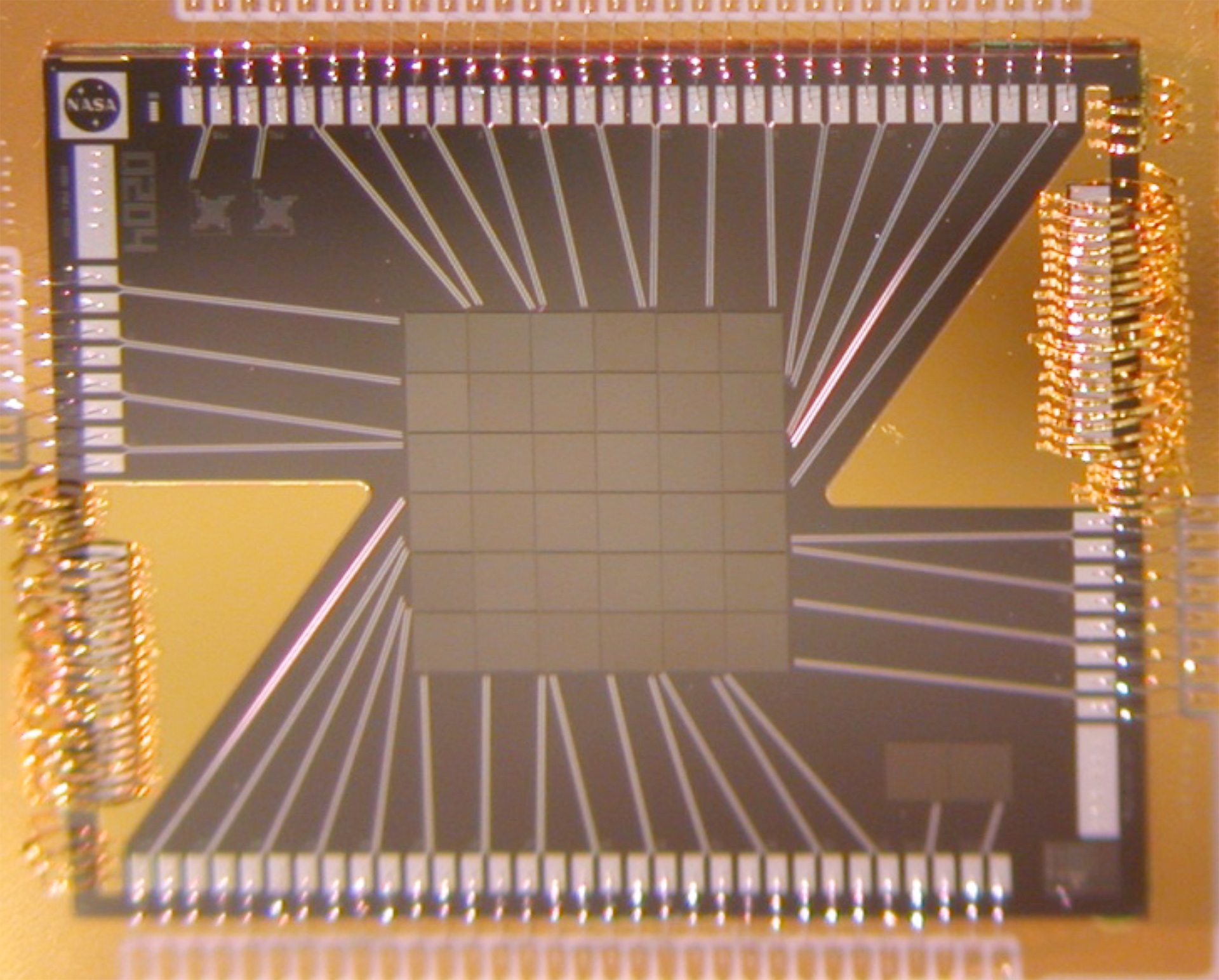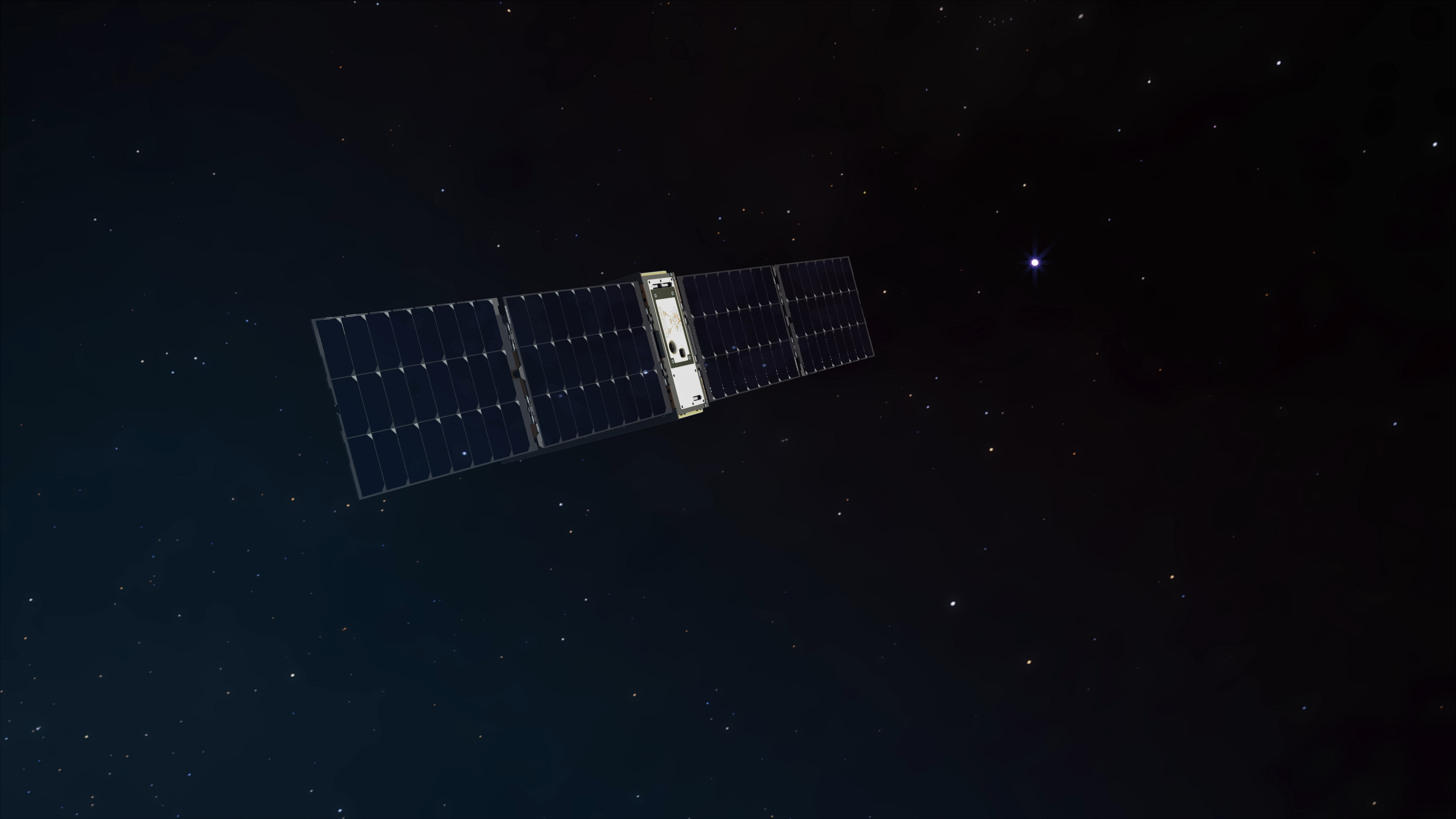9 min read
Whether walking down a city street near a crowded nightclub opening or pulling up to the parking lot at the local county fair, it’s probably a safe bet that you’ve seen those bright, white searchlights flitting across the dark nighttime sky – the outline of the light beam clearly visible as it reaches up to touch the bottoms of the clouds overhead. As a signal that can be seen far and wide, searchlights have a way of drawing you in to the main event. Hollywood producers certainly know this to be true. For example, the next time you sit down with a bowl of popcorn to watch a 20th Century Fox movie, note the searchlights scanning the hazy skies in the opening credits. Part of the reason searchlights are so captivating is that when we shine them up into the heavens, the light doesn’t just travel up to be lost into space – much of it is reflected by particles, clouds, and gases in the Earth’s atmosphere back down to the ground where we can see it.

As a scientist at NASA’s Langley Research Center, I study how these particles, clouds, and gases are distributed throughout Earth’s atmosphere and how they are likely to change in the future. Many of the tools that my colleagues and I use to measure atmospheric components rely on the same light scattering physics that are apparent from observing a searchlight beam. In fact, some of the earliest atmospheric remote sensing scientific studies actually used searchlights. Hulbert (1937) describes shining a powerful searchlight up into the sky and photographing the beam from a station that was located roughly 20 km away. They noted that the intensity of the light changed with altitude, which they attributed to the changing density of air molecules and to the presence of “haze particles” in the upper troposphere.

Today, we no longer use searchlights, but instead rely on instruments with powerful lasers that are called lidars. As their name implies, a lidar is very similar to the commonly known radar. However, instead of emitting radio waves to track storms, the lidar emits a pulse of laser light at a precise wavelength that is capable of seeing much smaller atmospheric features than storm clouds. As the light photons from the laser beam travel through the atmosphere, some of them are absorbed or scattered by gas molecules or particles, and the photons that are backscattered toward the lidar are collected by a detector and recorded over time. Since photons travel at a fixed speed of light, the time (as measured in tiny fractions of a second) at which they are detected is directly proportional to how far away the gases or particles are from the lidar. In addition, particles and gases interact differently with light of varying wavelengths, so we can use different “color” lasers to detect different atmospheric components. For example, take a look at the image at the beginning of the post showing the green lidar beam pointing up into the nighttime sky of Bozeman, Montana.
What if I told you that there are actually two lidar beams in this photograph, not one?
The green beam is clearly visible and is measuring the backscattered photons from particles and clouds, but there is a second beam right beside it at an infrared wavelength that is invisible to our eyes, but whose photons can be “seen” by the lidar detector. Since gaseous water vapor strongly absorbs light in the infrared, this second beam gives us the water vapor concentration in the atmospheric column.
Ground-based, upward-looking lidars like those shown above are operated by many research universities and institutions worldwide and provide unprecedented observations of atmospheric vertical structure and how it varies with time for a given location. NASA also maintains a network of ground-based micropulse lidars (MPLnet) throughout the world for atmospheric monitoring and satellite validation. A key advantage of using a powerful single-wavelength laser instead of the white light source used in searchlights of old is that our modern lidars are able to overpower the natural sunlight signal so that we can even make measurements during the daytime.
In addition to these highly-localized ground lidars, we also use downward-looking lidar instruments located on satellites and airplanes to characterize the vertical profile of the atmosphere across regional, national, and global scales. Ensuring that the lidar electrical and optical components can operate safely and effectively in space or at high altitude presents a large number of technological challenges to scientists and engineers that are not present with ground-based systems. To bring these instruments to fruition requires a decades-long international effort that is still underway.

The first space-based backscatter lidar designed to measure atmospheric aerosols and clouds was the NASA Lidar In-Space Technology Experiment (LITE) instrument that orbited Earth for 9 days in September 1994 aboard the Space Shuttle Discovery. Operating for 53 hours, and collecting over 40 gigabytes of data (a large amount in the 1990s!), LITE proved the concept of making backscatter lidar measurements from space and paved the way for the current-generation CALIOP lidar aboard the NASA/CNES CALIPSO satellite, which was launched in 2006. As part of the A-Train constellation of satellites, CALIPSO encircles the entire globe providing vertical profile “curtains” like those shown in the figures below. Red and yellow coloring denotes areas of high light backscatter due to the presence of aerosols and clouds, which are observed in the scene at right both near the ground as well as high up near the stratosphere (10-15 km altitude). The CALIPSO satellite continues to operate and provide valuable data to Earth scientists, despite having already well exceeded its design lifetime. The new NASA Cloud-Aerosol Transport System (CATS) lidar launched to the International Space Station earlier this year (2015), and the planned launch of the European Space Agency EarthCare ATLID lidar will ensure the continuity of the satellite lidar record in the near future.

Just from perusing the launch dates in the previous paragraph, it’s apparent that putting together a successful satellite mission takes time; however, the pace of scientific discovery is rapid and unrelenting. Society requires, and the scientific community must provide, the Earth science data that policymakers need to make informed decisions on topics ranging from regional air quality, to ocean and land use change, to climate change. Even as current satellite lidar technologies are being built, the next-generation of lidars are being tested on airplanes in a variety of field missions. This approach has the advantage both of advancing the technological readiness of these instruments on a path toward space, as well as designing and carrying out hypothesis-driven, short-duration scientific studies using state-of-the-art lidar instruments.
One such experiment was the recently-concluded NASA DISCOVER-AQ field project, where our goal was to understand how well satellite remote sensors are able to detect air pollution near the ground. Such a study is hard to accomplish with actual satellite sensors since they only overfly a particular place once or twice a day or month depending on the particular satellite orbit and instrument swath. To get around this, DISCOVER-AQ used two airplanes: one flying at high-altitude with a lidar and other remote sensors to act as satellite simulators, and one flying at low-altitude with detailed in situ validation instrumentation. The image below shows the flight tracks for these two airplanes as they overfly ground-based measurement stations and balloon launch points in the Baltimore-Washington D.C., USA, metropolitan area. By measuring the atmospheric state using both in situ and remote sensing instruments, we’re able to 1) understand how pollution is distributed across the selected metropolitan areas, and 2) evaluate and improve the remote sensor data analysis algorithms that will someday serve as the basis for the next-generation of satellite sensors.

Another exciting experiment is the upcoming NASA NAAMES field project to be carried out in 2015-2019. The goal of NAAMES is to understand how ocean phytoplankton ecosystems vary seasonally and how this variability translates into changes in sea spray aerosols, clouds, and regional climate. Detailed measurements of the ocean and surface atmosphere composition are conducted aboard an ocean-going ship that will cruise through the North Atlantic Ocean during four different seasons. Meanwhile, we will overfly the ship with a C-130 aircraft that is heavily instrumented with both in situ aerosol/cloud instruments as well as remote sensing instruments including an ocean-profiling high-spectral resolution lidar (HSRL), ocean color imager, and polarimeter. As shown in the project cartoon below, the ocean-profiling HSRL is a new, unique instrument that is able to profile both the atmospheric aerosols and clouds as well as the first 30 meters or so of the ocean waters. The NAAMES mission relies on the light-based lidar measurements made from aboard the airplane to connect the ship measurements to the much larger spatial scales covered by current satellite-based ocean color instruments, and to help evaluate and refine the ocean-profiling lidar operational parameters and data analysis algorithms that will someday be used to interpret the measurements of a future satellite instrument of this kind.

The international suite of space-based advanced lidar instruments now being deployed to study the Earth System build on a rich history of technological development spanning many decades. With new and exciting light-based instruments employing the HSRL technique (among others) and now also able to derive sub-surface ocean properties, the future of studying the Earth using spaceborne lidars seems bright.

Richard Moore is a Research Physical Scientist at NASA’s Langley Research Center in Hampton, Virginia, USA. In this role, he works closely with the other members of the NASA Langley Aerosol Research Group (LARGE) and NASA Langley Lidar Applications Group to study the interaction between atmospheric aerosols and cloud formation. Prior to joining NASA, Rich completed his Ph.D. in Chemical Engineering with the Nenes Research Group at Georgia Tech.
Professional Website: http://science.larc.nasa.gov/profiles/Richard_H_Moore







